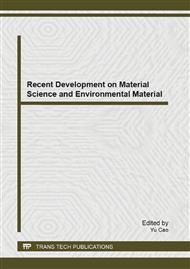p.345
p.351
p.356
p.361
p.365
p.375
p.379
p.383
p.389
Effect of Cathodic Protection Systems with Zn-Mesh Sacrificial Anodes on Reinforced Concrete Structures in an Accelerated Marine Environment
Abstract:
In the present study, corrosion and cathodic protection (CP) characteristics of concrete piles exposed to marine environments such as marine bridge columns or pier structures were evaluated under simulated conditions. The accelerated environmental tests were carried out at an elevated temperature (40°C) and a high chloride concentration (15%). The protection potential of CP systems with Zn-mesh sacrificial anodes applied to piles was inversely proportional to the water content in the concrete. When the CP system was applied after corrosion initiation and propagation (CProt), the protection current density was higher than when the CP system was applied at the beginning of structural construction (CPrev). However, the four-hour depolarization potential was higher in the latter case than in the former. In addition, it was found that even though the current density of the CPrev system was relatively lower than that of the CProt system, the CPrev system was also able to prevent corrosion. Consequently, both CProt and CPrev systems are very effective at preserving reinforced concrete structures, especially in marine environments.
Info:
Periodical:
Pages:
365-374
Citation:
Online since:
September 2013
Authors:
Keywords:
Price:
Сopyright:
© 2013 Trans Tech Publications Ltd. All Rights Reserved
Share:
Citation:


